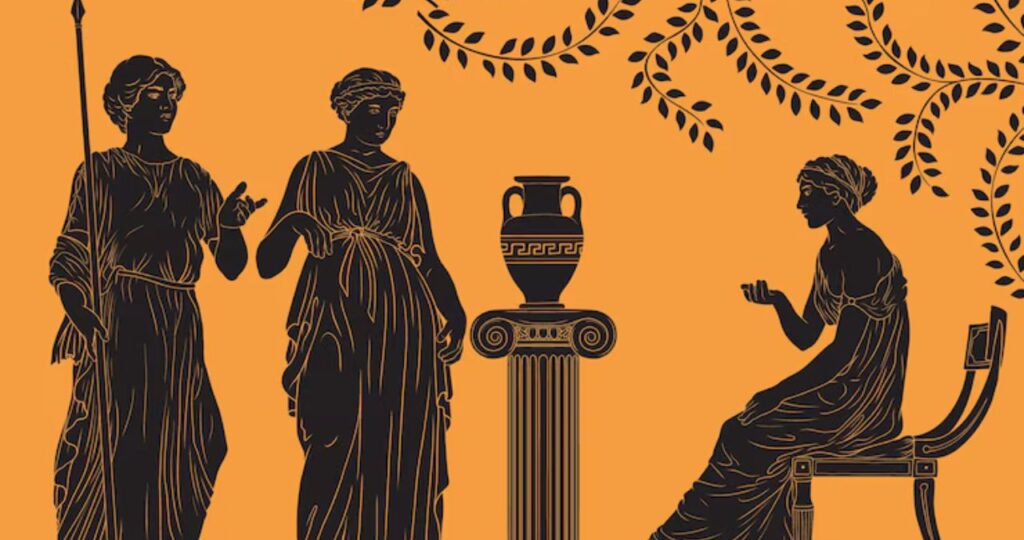Inspired by the elegance of ancient Greece and Rome, the Neoclassicism art movement surged in the 18th and early 19th centuries, revitalizing a fascination with the classical past. This wave, often referred to as a “Philhellenic” movement due to its love for Hellenic culture, was a response to the excessive ornamentation of Rococo and Baroque art, with an intention to return to the order, simplicity, and ideals of antiquity.
More than just an aesthetic, Neoclassicism became a cultural phenomenon, influencing architecture, sculpture, painting, literature, and even politics. In this blog post, we will explore the origins of Neoclassicism, its connection to the Philhellenic spirit, its defining characteristics, and its enduring legacy in modern-day art and culture.
The Roots of Neoclassicism
A Desire to Reconnect with the Past
The 18th century was a period of rediscoveries. The enlightenment values of reason, order, and intellect sparked an interest in reviving the ideals of ancient Greece and Rome. Archaeological excavations at sites like Pompeii and Herculaneum in the mid-1700s unearthed treasures that reignited curiosity about classical art and culture. These discoveries brought Greco-Roman aesthetics back to the forefront of Western imagination, creating a fertile ground for Neoclassicism to emerge.
The Philhellenic Spirit
“Philhellenism” stems from the Greek words “philos” (love) and “hellen” (Greek) and refers to an admiration of Hellenic culture, traditions, and ideals. This deep love of Greek heritage not only led to the preservation of ancient ruins and classical teachings but also motivated adoption and reinterpretation of those ideals in the creation of new art. The movement drew heavily from Greek philosophers such as Socrates and Plato, as well as themes of democracy, heroism, and human excellence.
The grand narratives surrounding democracy and civic virtue resonated particularly with the European intelligentsia of the time. This cultural admiration wasn’t purely historical, as it became entwined with support for Greece’s War of Independence against the Ottoman Empire in the 1820s, further emphasizing the influence of the Philhellenic movement.
Defining Characteristics of Neoclassical Art
1. Simplicity and Clarity
Neoclassical art consciously rejected the excessive ornamentation of Rococo and Baroque styles. Instead, clean lines, geometric symmetry, and balance became hallmarks of this movement. Simplicity didn’t mean lifelessness, however. Each element was carefully calculated to serve as an understated yet impactful embodiment of the classical spirit.
Example: Jacques-Louis David’s painting The Oath of the Horatii (1784) features statuesque figures and clean composition with a moral focus on loyalty and sacrifice.
2. Inspiration from Antiquity
The imagery of Greco-Roman mythology, architecture, and attire appeared repeatedly in Neoclassical art. Columns, togas, and laurel wreaths became common visual motifs. Historical accuracy in architecture and costume was prioritized, adding to the “authenticity” of this style.
Example: Antonio Canova’s marble sculptures, like Psyche Revived by Cupid’s Kiss, demonstrate meticulous attention to classical proportions and emotional expressions.
3. Moral Virtue and Heroism
Unlike the frivolous romanticism of Rococo, Neoclassical art sought to evoke moral lessons and intellectual contemplation. Paintings often depicted noble sacrifices, civic duty, and moral fortitude.
Example: David’s The Death of Socrates portrays the philosopher’s stoic sacrifice as a testament to virtue and reason.
4. Monumental Architecture
Neoclassicism extended far beyond canvas and marble into architecture. Cities across Europe and America saw a rise in grandiose buildings inspired by Greek temples and Roman forums. Neoclassical architecture conveyed a sense of power, permanence, and enlightened governance.
Example: The United States’ Capitol Building embodies the Greco-Roman architectural ideals of symmetry, imposing columns, and a sense of civic grandeur.
Neoclassicism Across Artistic Disciplines
Architecture
Neoclassical architecture took the ideals of harmony and proportion seen in ancient ruins and reimagined them for modern functions. The movement became prominent in civic architecture, with palaces, government buildings, and cultural institutions receiving neoclassical facelifts.
- Examples: The Brandenburg Gate in Berlin, the Panthéon in Paris, and the British Museum in London.
Sculpture
Sculptors embraced marble as the medium of choice, highlighting its connection to ancient art. Settings were often thematic, evoking gods, heroes, and mythological subjects.
- Notable Artists: Antonio Canova, Bertel Thorvaldsen.
Literature and Philosophy
Writers and philosophers of the era channelled Neoclassical ideals into their works, drawing on themes like reason, moral integrity, and civic responsibility. Poetry, plays, and philosophical essays resonated deeply with the movement’s ethos.
- Examples: Johann Wolfgang von Goethe and Lord Byron were literary icons whose works captured the Neoclassical emphasis on the Hellenic spirit.
The Enduring Influence of Neoclassicism
While the Neoclassical movement peaked in the late 18th and early 19th centuries, its influence is deeply woven into the fabric of modern art and culture. Contemporary architects continue to borrow Greco-Roman motifs, while visual media, including films and digital art, often reference the aesthetic ideals of balance and heroism.
Statues and architecture from this period remain centerpieces in the cities they adorn, reminding us of an era that revered the harmony and timelessness of Hellenic ideals.
Why Does Neoclassicism Matter Today?
Neoclassicism goes beyond art; it embodies a grand ideal of reconnecting with history to generate progress. Its emphasis on reason, civic duty, and beauty in simplicity is as relevant in the 21st century as it was in its heyday. Today, this art movement serves as a reminder that while the world constantly evolves, the timeless values of the classical past can still illuminate our way forward.
Step Into the World of the Ancients
Interested in discovering more about Neoclassicism and the Philhellenic spirit? Visiting a museum or historic building inspired by this movement is a great way to experience its splendor firsthand. Explore its themes in art history more deeply, or perhaps apply its ideals of balance and harmony to your own daily life. The past, after all, continues to mold our future.







